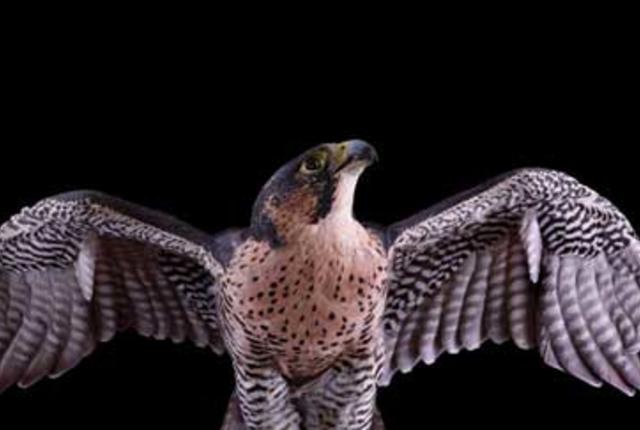Note: This article was part of a photographic series featured in the December, 2011 issue of New Mexico Magazine. It recently earned a gold award at the 2012 International Regional Magazine Association awards. View a slideshow of Photographer Brad Wilson's photos that accompanied the article here.
Brad Wilson says that years ago, while he was taking hundreds of portraits of people while living in New York City, it occurred to him that he’d like to try photographing wild animals that way, too. But getting near the oftentimes feisty creatures—let alone having them stay still enough to have their pictures taken—had him wondering to himself, “Is it even possible?”
That question was soon answered when Wilson met a trainer who was able to provide him a chimpanzee at a California animal sanctuary. One chimp led to another, then to a capuchin monkey, an African elephant, a lion, a tiger, and a zebra—and Wilson’s reputation for animal portraiture flourished. Earlier this spring, Wilson, who has worked at the Santa Fe Photographic Workshops and who relocated to the Capital City in 2004, proposed photographing birds of prey in rehabilitation at The Wildlife Center, just south of Española.
“When I got online and looked at his work, I said, ‘Here’s a guy who is doing really interesting work with animals,’ ” says Katherine Eagleson, director of the Center.
The Wildlife Center, a nonprofit organization, rehabilitates 150 different species, including bears, reptiles, raptors, and small mammals, with the intent of returning them to the wild, if possible. “We get a lot of people who want to take pictures,” says Eagleson. “Occasionally, we allow a professional to get up close and personal with the birds.”
Eagleson says that when Wilson first saw the birds in the spring, they were molting, or shedding, their winter feathers. They deemed that September, when their new feathers had grown out, would be the ideal time to set up Wilson’s portable studio to photograph the animals.
All of the birds Wilson photographed are permanent residents of the center and can’t be retuned to the wild due to injury or illness, Eagleson says. The 10 birds include a bald eagle, hawks, various owls, a turkey vulture, and a falcon hybrid. Eagleson, who says the Center relies on donations for 75 percent of its income, says 2011 was especially stressful on wildlife and the Center because of the “double whammy” of the winter drought and the summer wildfires.
Wilson explains that the raptors were photographed while perched on the arms of their handlers, and that he was able to get within six inches of his subjects. His focal point was usually the surface of their eyballs, resulting in the intimacy, detail, and texture of these images.
“There are always interesting things that happen on these shoots. You just don’t walk up to a tiger and say, ‘Sit!’ ” Wilson laughs. “The shoot is sort of an organized chaos. You’re waiting for your moment. We let the animal set the pace.”
For info about The Wildlife Center:
(505) 753-9505; www.thewildlifecenter.org


